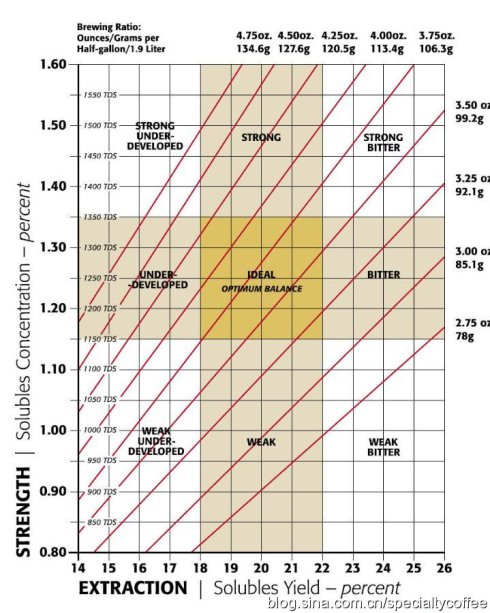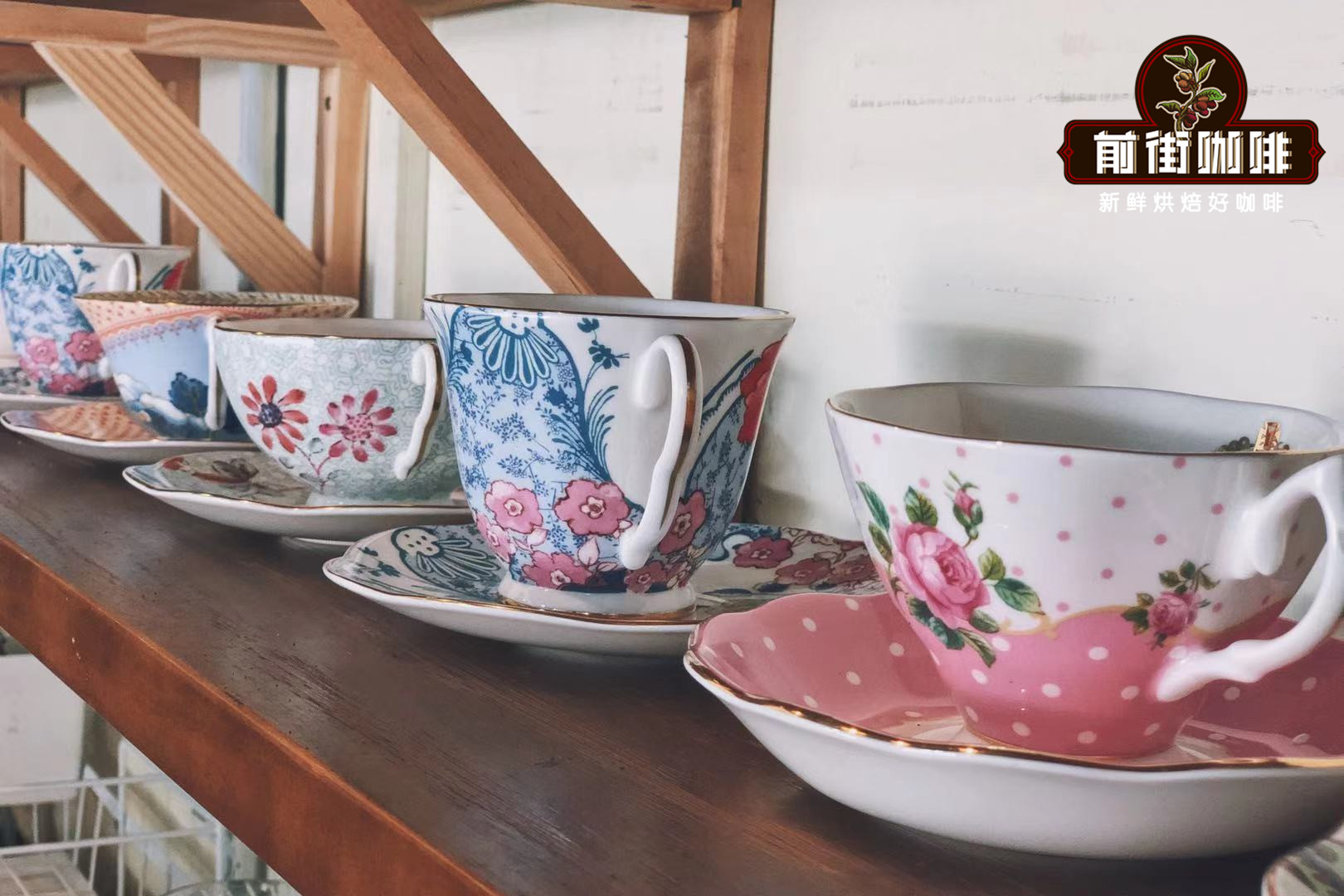Columbia Coffee Bean Water ratio
Standard brewing ratio
Number of cups of coffee
Cups of
Coffee
Coffee to BE used
Water to BE used
by weight
BY WEIGHT
by gauge
BY MEASURE
Ounces
Grams
teaspoon Tea
Spoons
Table spoon
Spoons
Cups
Coffee Fluids (oz)
Fluid
Ounces
Number of cups
pints
Quarters
1/2 gallon 1/2 GAL
cc
(milliliters)
Litter
1
0.38
10.6
6
2
1/8
8
1
1/2
1/4
1/8
237
0.24
2
0.75
21.3
12
4
1/4
16
2
1
1/2
1/4
473
0.47
3
1.13
31.9
18
6
3/8
24
3
1 1/2
3/4
3/8
710
0.71
4
1.50
42.5
24
8
1/2
32
4
2
1
1/2
947
0.95
5
1.88
53.2
30
10
5/8
40
5
2 1/2
1 1/4
5/8
1183
1.18
6
2.25
63.8
36
12
3/4
48
6
3
1 1/2
3/4
1420
1.42
7
2.63
74.4
42
14
7/8
56
7
3 1/2
1 3/4
7/8
1656
1.66
8
3.00
85.1
48
16
1
64
8
4
2
1
1893
1.89
9
3.38
95.7
54
18
1 1/8
72
9
4 1/2
2 1/4
1 1/8
2130
2.13
10
3.75
106.3
60
20
1 1/4
80
10
5
2 1/2
1 1/4
2366
2.37
11
4.13
116.9
66
22
1 3/8
88
11
5 1/2
2 3/4
1 3/8
2603
2.60
12
4.50
127.6
72
24
1 1/2
96
12
6
3
1 1/2
2840
2.84
If you know the amount of ground coffee, multiply it by a factor of 21.33 to know how many ounces of water you need (0.046875 is the inverse factor), multiply it by a factor of 22.2593 to get how many milliliters of water you need (0.04493 is the inverse factor);
For example, 1.2 ounces of ground coffee multiplied by 21.33 would require 25.6 ounces of water;92.6 grams of ground coffee would require 2061CCs (2.06 liters) of water. Multiply the known amount of water by the inverse factor to obtain the required amount of coffee powder.
Enthusiasts brew
Cups of
Coffee
Coffee to BE used
Water to BE used
BY WEIGHT
BY MEASURE
Ounces
Grams
Tea
Spoons
Table
Spoons
Cups
Fluid
Ounces
Cups
Pints
Quarts
1/2 Gal
CCs
(milliliters)
Liters
1
0.38
10.6
6
2
1/8
6
3/4
3/8
3/16
3/32
177
0.18
2
0.75
21.3
12
4
1/4
12
1 1/2
3/4
3/8
3/16
355
0.35
3
1.13
31.9
18
6
3/8
18
2 1/4
1 1/8
9/16
9/32
532
0.53
4
1.50
42.5
24
8
1/2
24
3
1 1/2
3/4
3/8
710
0.71
5
1.88
53.2
30
10
5/8
30
3 3/4
1 7/8
15/16
15/32
887
0.89
6
2.25
63.8
36
12
3/4
36
4 1/2
2 1/4
1 1/8
9/16
1065
1.06
7
2.63
74.4
42
14
7/8
42
5 1/4
2 5/8
1 5/16
21/32
1242
1.24
8
3.00
85.1
48
16
1
48
6
3
1 1/2
3/4
1420
1.42
nine
3.38
95.7
fifty-four
eighteen
1 1/8
fifty-four
6 3/4
3 3/8
1 11/16
27/32
1597
1.60
ten
3.75
106.3
sixty
twenty
1 1/4
sixty
7 1/2
3 3/4
1 7/8
15/16
1775
1.77
eleven
4.13
116.9
sixty-six
twenty-two
1 3/8
sixty-six
8 1/4
4 1/8
2 1/16
1 1/32
1952
1.95
twelve
4.50
127.6
seventy-two
twenty-four
1 1/2
seventy-two
nine
4 1/2
2 1/4
1 1/8
2130
2.13
If you know the amount of coffee powder, times the coefficient 16, you know how many ounces of water you need (0.0625 is the inverse coefficient), multiplied by the coefficient 16.6945, you get how many milliliters of water you need (0.04493 is the inverse coefficient).
For example, if you have 1.2oz coffee powder multiplied by 16.0, you need 19.2oz water; 92.6g coffee powder requires 1562CCs (1.56L) water. The amount of coffee powder required can be obtained by multiplying the inverse coefficient with the known amount of water.
Comparing the two tables, it is not difficult to find that the so-called brewing of enthusiasts is just a little higher in concentration and heavier in taste.
To put it simply, under normal circumstances, one serving of powder (10 grams) is washed into about 22 parts (220 grams) of water, while enthusiasts use one part of powder (10 grams) to flush about 160,17 parts of water (160,170g water).
The picture below is the coffee brewing rate chart of SCAA. If you have the TDS gadget and find that the value of coffee is within the yellow box in the middle of the table below, the coffee wine is relatively balanced and delicious. In this table, the Abscissa is the coffee extraction rate, that is, the ratio of the coffee ingredients extracted from the coffee beans (powder) to the coffee beans (portions). The ordinate represents the ratio of the extracted coffee ingredients (special hint: this is not the weight of the coffee powder) to the total coffee liquid, also known as concentration. The conclusion of SCAA's long-term observation and research is that when the extraction rate of coffee is 180.22% and the concentration is 1.15 ~ 1.35% (that is, the range of yellow box), the taste of coffee is the best (balanced and delicious).

(source: scaa.org)
The above data need special equipment to test, but as long as we pay attention to a few points, the test data of the coffee is basically within the above range.
1. The ratio of coffee powder to water used (1: 15: 20) is usually chosen as 1:18, which is adjusted according to the taste. )
two。 The thickness of coffee grinding (sugar thickness, about 0.86 mm)
two。 The contact time between coffee and water (the soaking time of coffee powder in water is about three minutes)
4. The temperature of the water (92-96 degrees).
Important Notice :
前街咖啡 FrontStreet Coffee has moved to new addredd:
FrontStreet Coffee Address: 315,Donghua East Road,GuangZhou
Tel:020 38364473
- Prev

Colombia Coffee Bean Growing Region Story and Taste Flavor Characteristics Description Claw Coffee Hand Brewing Advice
Pay attention to coffee comment (Weixin Official Accounts vdailycom) and find a beautiful coffee shop to open its own shop Colombia's coffee culture Colombia's coffee culture is also very unique, coffee is the pride of Colombians, Colombians like to talk about a few things most, except their feet that once ranked among the best in the world
- Next

Are Colombian coffee beans suitable for coffee machines?
Following Cafe Review (Wechat official account vdailycom) found that Beautiful Cafe opened a small shop of its own that can use siphon, hand brew, French pressure, love pressure, and other coffee utensils to extract what taste you like according to different utensils! It is recommended to choose siphon or hand flush! These two kinds of siphon are better, because they can completely extract the flavor of origin! If your skills are not very good,
Related
- Detailed explanation of Jadeite planting Land in Panamanian Jadeite Manor introduction to the grading system of Jadeite competitive bidding, Red bid, Green bid and Rose Summer
- Story of Coffee planting in Brenka region of Costa Rica Stonehenge Manor anaerobic heavy honey treatment of flavor mouth
- What's on the barrel of Blue Mountain Coffee beans?
- Can American coffee also pull flowers? How to use hot American style to pull out a good-looking pattern?
- Can you make a cold extract with coffee beans? What is the right proportion for cold-extracted coffee formula?
- Indonesian PWN Gold Mandrine Coffee Origin Features Flavor How to Chong? Mandolin coffee is American.
- A brief introduction to the flavor characteristics of Brazilian yellow bourbon coffee beans
- What is the effect of different water quality on the flavor of cold-extracted coffee? What kind of water is best for brewing coffee?
- Why do you think of Rose Summer whenever you mention Panamanian coffee?
- Introduction to the characteristics of authentic blue mountain coffee bean producing areas? What is the CIB Coffee Authority in Jamaica?

